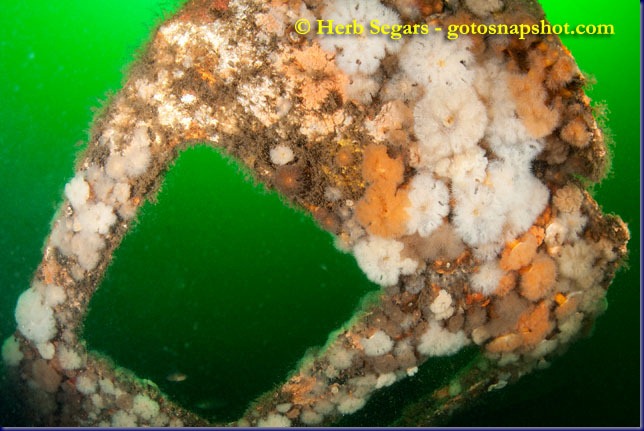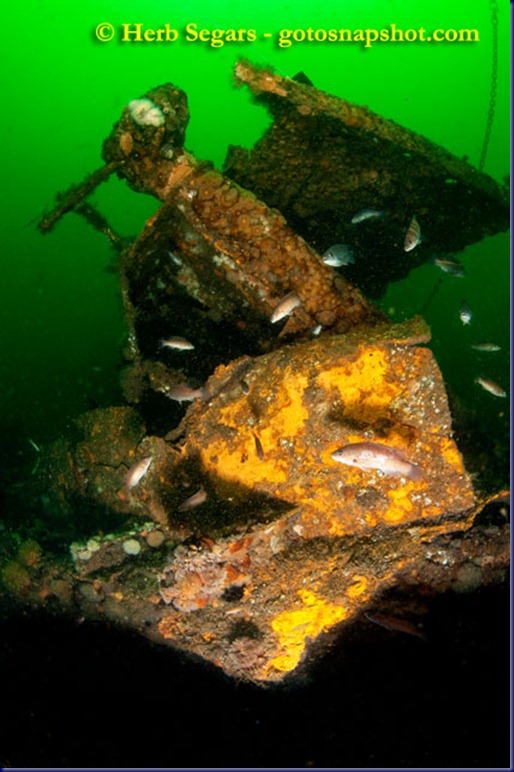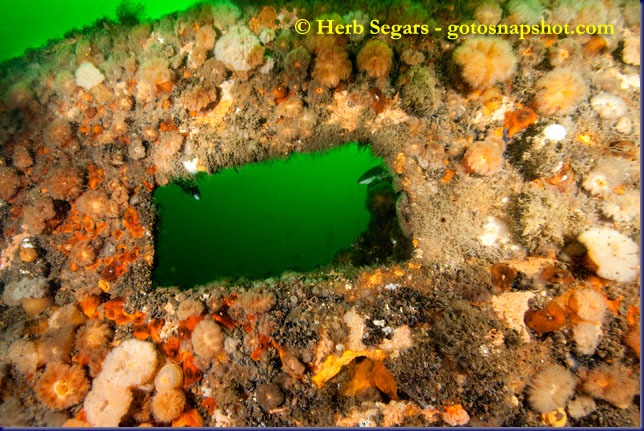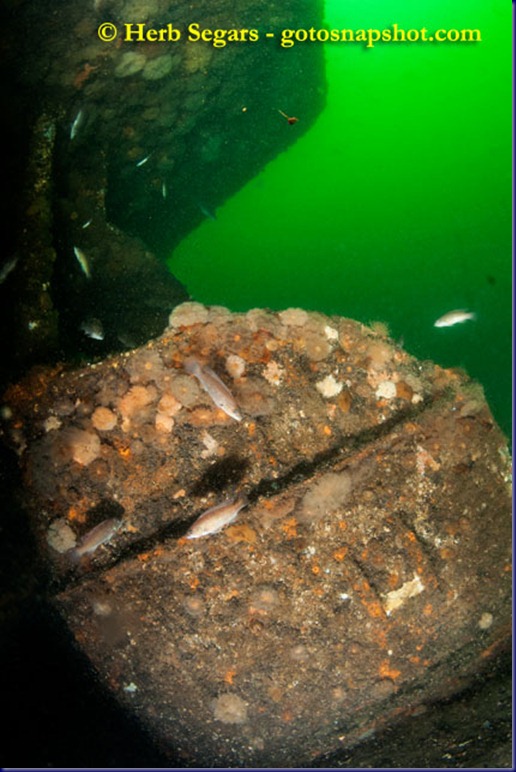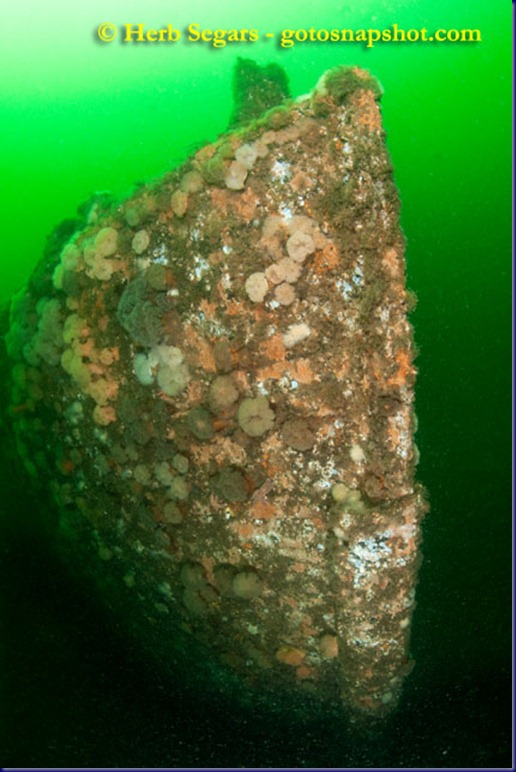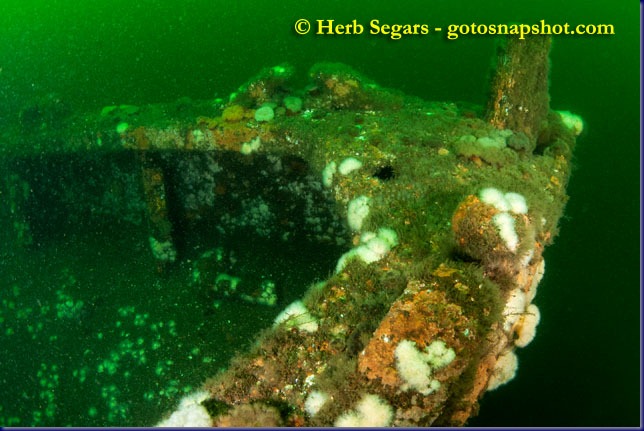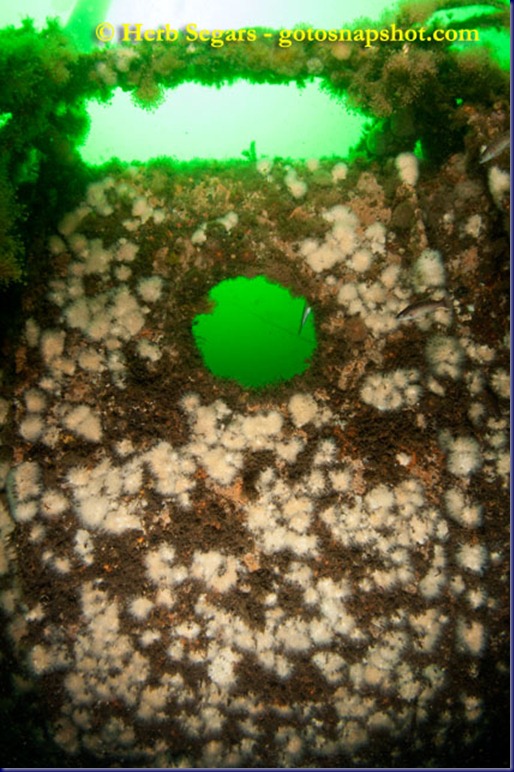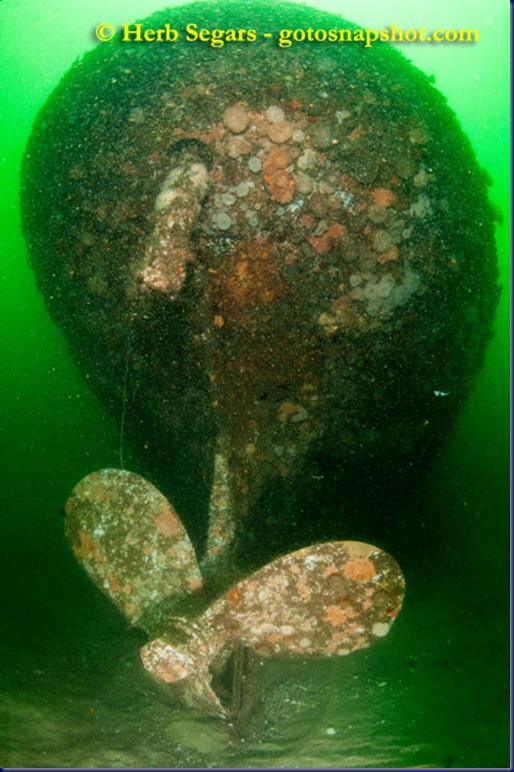We have finally kicked started our New Jersey diving this year and I have some artificial reef sites that I want to photograph. They are sites that I have not been on before.
We left Manasquan Inlet into a flat ocean and traveled the 3.5 miles to the Sea Girt Artificial Reef site. There were plenty of fishing boats on the reef despite the fact that it was a Monday. Our primary destination was the Travis Tug but it was taken. I scanned for nearby sites and saw that the Golden Eagle Trawler was close. No one was on the trawler so we grappled in and got ready for our dive.
Beth and I suited up while Ronnie and Wes helped us along. The sun was shining, temps were in the 80’s and the seas were pretty flat.
The surface water temperature was around 76 degrees and the bottom logged in at 57 degrees.
It has been a long time since I was on the Golden Eagle trawler and it has changed a lot. It was sunk in 1993 so it has been on the bottom for nearly 30 years. When I dove it originally, the pilot house was in tact and there was a tremendous amount of growth.
The pilot house is gone and the front bulkhead with the three windows lies on the edge of the hull. You can see the right hand window in the first photo in this post.
There were plenty of fish but I noted that the growth on the site was much less than I remembered. Of course, this changes from year-to-year.
Now that I look at the photos, I see that there is growth on the hull but it seems much less than I remember.
Beth and I had about a 45-minute dive on the site and we both took photos. I also shot some video with my GoPro Hero2 video camera and I will post the finished video after some editing.
I really enjoyed swimming to the stern and seeing the large rudder of the Golden Eagle trawler sitting above the sand.
The Golden Eagle Trawler is an 80′ commercial trawler sunk on December 19, 1997 at 26907.7 / 43511.2.
Sponsored by friends of Eagle Pharo. The Golden Eagle Trawler is “A tribute to Captain Eagle Pharo; he could always find the fish.”
After our first dive, we decided to see if the Travis Tug was open and we were in luck.
We quickly dropped a marker buoy and grappled in almost as quickly.
We finished our hour-and-a-half sit time and went in for our second dive.
Bottom conditions were about the same on the Travis Tug as there were on the Golden Eagle trawler. Visibility was around 15 feet and the bottom temp was 57 degrees.
I started my dive at the bow and spent some time photographing it. It was covered with frilled anemones. I noticed that the topside portions of the tug did not have as much growth as I expected.
Again, this is a situation that changes from year-to-year. We will come to a site one year and it will be covered with large blue mussels. The next year, they are gone and in their place are tiny mussels which grow into larger ones over time.
My son asked me the other day, “where do the mussels go” and I really didn’t know. So if anyone does, please post the answer.
There are clumps of northern stony coral and frilled sea anemones on the top portions of the tug.
This bulkhead has a lot of northern stony coral on it as well as tubularian hydroids and frilled anemones.
NJScuba.net has a good description of the tug: “Built in 1920, this is one of the oldest vessels sunk in New Jersey as a reef. The hull is of riveted construction with concrete decks, unique among all the reef tugs that I know of, which are all welded in the more modern fashion. The engine is removed. The main deck is littered with the remains of the deck house, which is almost completely obliterated.
The rudder is missing, and the remains of the pilot house and smokestack lie upside-down in the sand on the port side. This is a great dive for student checkouts. It lets divers see an intact wreck in reasonably shallow water, on a nice-size and easy to navigate wreck.”
The Travis Tug is 95’ long and was sunk on October 31, 2001.
It was sponsored by Captains Steve Nagiewicz and Dan Crowell. The depth is around 75 feet and the bottom is sandy.
The stern was one of my favorite places during the dive. I settled in near the propeller and tried to compose a photo that included the prop and the stern of the tug.
It worked out pretty well.
I like diving sites where ships look like ships as they with most ships on artificial reefs. I tend to get lost easier than I like and some of the larger jumbled wrecks like the Mohawk and the Tolten require me to pay a lot more attention to what I am doing. That’s okay but when I am trying to fit in some video shooting with my stills, it is more fun and easier for me on a site like this one.
The video that I took is on YouTube and you can see it here.
We went out later in the week and visited the Dykes for mussels. I will write about it in another post.
© 2012, Herb Segars. All rights reserved.

